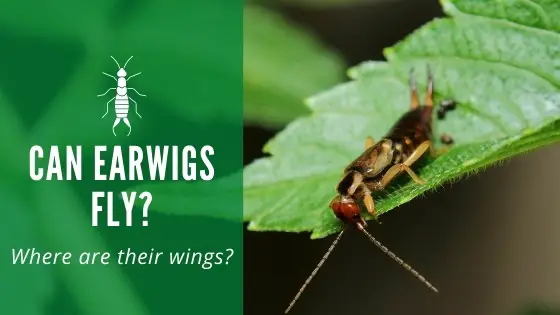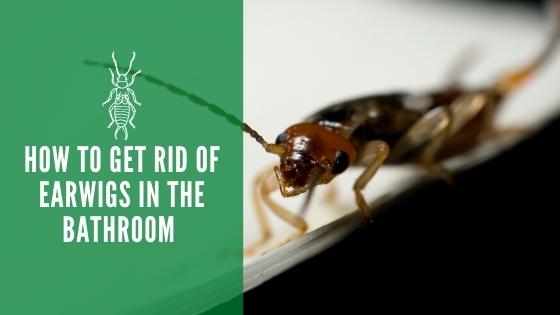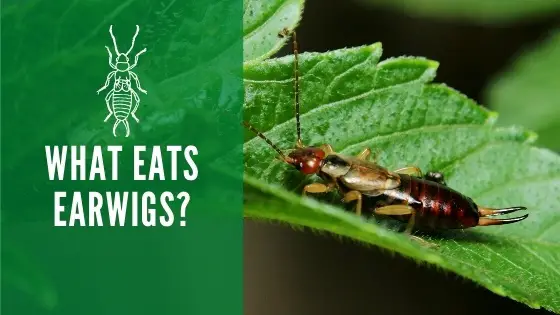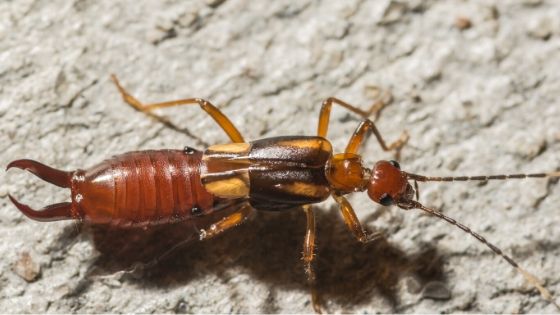Can Earwigs Fly?

Earwigs are small, brown bugs that look like the things nightmares are made of, and many people confuse them with cockroaches at first glance.
The characteristic that most people notice is the pincers on their abdomen, but these little critters have a little hidden surprise that not many people are aware of; some of them can fly!
What Are Earwigs?
Earwigs are an insect that has been the target of lore and legend. The Old English word for them is ear wiggler. There is an old myth about this insect crawling in your ear when you sleep. The myth goes on to say that the earwig will tunnel into your brain and lay eggs there. Don’t worry, none of this is true at all.
Earwigs are typically harmless creatures, and they have no interest in entering your ear. This legend might have started when one searched for any dark, moist place, but this is not their preferred habitat. Earwigs are about three-quarters of an inch long and are brown-black. The male has curved pincers, and the female has straight ones. They look more frightening than they are in reality.
Do Earwigs Have Wings & How Do Earwigs Fly?
Not only do earwigs fly, but they have a unique way of doing it. Earwigs use their wings to fly short distances, but they do not fly around like flies or bees. They use their wings to give them a little extra lift and speed when jumping, breaking falls, or escaping from predators. Earwig wings are fascinating because they have a unique folding pattern that engineers are using as inspiration for the development of future aircraft design.
The folding wings of the earwig can fold in a way that makes them difficult to see. They are one of the most compact wing storage designs in the insect world. One of the reasons why scientists think this unique origami-like folding pattern developed is because, unlike many flying insects, the earwig’s daily activities include wiggling into tight spaces and digging in the soil. These activities would be hindered by large wings protruding from their back.
Earwigs are the only insect known to have developed this unique folding pattern. The main challenge is that the wing must be soft enough to tuck close to the body yet rigid when in flight. To solve this problem, the earwig has developed a unique stabilizing system that snaps into place when in flight and then disconnects when in the stored position.
Many insect wings that tuck close to the body fold like an accordion. The earwig wing does this, but the rigid structures that snap into place during flight also allow it to fold along the length as well.
Consequently, if you try to reconstruct the complex folding pattern of the earwig wing using the paper-folding technique of origami, you will find it to be one of the more challenging shapes. The next time you see an earwig, you might have a new appreciation for this fascinating little creature.
Where Do They Live?
There are 22 species of earwigs in the United States, but only four or five of them are considered household pests. Most of them live on the moist forest floor or in gardens.
During the day, they hide in leaves and debris outdoors. You might find them under stones, garden mulch, or in the cracks of tree trunks. They prefer to stay in a place that is moist, dark, and sheltered from the elements.
Earwigs typically only move if you happen to disturb them. They will quickly scurry away, looking for a better hiding place. They are nocturnal and come out at night looking for food. They are garden helpers.
They eat decaying organic waste, such as plants, decayed flowers, berries, moss, grass, and other insects. They will eat caterpillar and moth eggs dead or alive. They help rid the garden of rotting plant matter and other more harmful garden pests.
Can Earwigs Hurt You?
Earwigs lay their eggs in batches of 30-60 in nests in the ground, not in human brains. The most menacing aspect of the earwig is the pincers on the back of the abdomen. They use these for protection from other animals and to capture live prey. Earwigs are not interested in humans at all unless you happen to pick one up, and it uses its pincers to nip you.
If this happens, they are only defending themselves and will quickly scurry away if you put them down. The pinch will hurt, but it does not have any venom. They are not known to carry or spread any human diseases, and they will not seek you out.
Natural Ways to Get Rid of Earwigs
Even though earwigs in your home are one of the more benign pests, you still do not want them inside your home. The first thing you should do if you see one scurrying for shelter when you turn on the lights is to try to see where it goes. Then you should look around that area for any rotting wood or moist, decayed material that will attract them.
You should also carefully seal the entrances in your home where they can get in with caulk or another suitable substance. Earwigs like cool, damp, dark places, which is the same type of environment that centipedes, millipedes, and roly-polys like. The first thing you should do is to try to eliminate the environment that attracted them.
This means replacing any rotten wood, fixing any plumbing leaks, and making sure your home is dry. Once you have done this, you can use some natural ways to get rid of earwigs.
Diatomaceous Earth
Diatomaceous Earth (DE) is a white powder that is the crushed remains of ancient sea creatures. The fine powder has sharp edges and will scratch the waxy shell of the insect.
The insect will die of dehydration and loss of fluid. It does not work immediately, but you will see them decrease over about a week. Diatomaceous earth is not harmful to pets or children.
Dish Soap and Water
Mixing a few drops of liquid dish soap in a spray bottle of water will kill earwigs in a few minutes. The soap penetrates the waxy coating and allows the water to enter into their tiny breathing tubes, called spiracles. This causes the insect to drown.
Vinegar
If you want to prevent earwigs from the perimeter of your home, you can spray straight vinegar around the foundation. You can also add a few drops of dish soap to the mix. Be aware that this mixture might harm any plants around the foundation, too.
Essential Oils
Several essential oils will repel earwigs. You can mix about 15 drops of lavender, basil, cinnamon, or clove oil in about 4 ounces of water. You can spray this mixture anywhere you see these bugs. A stronger mixture will work best. Be aware that they will be attracted to floral scents because they eat many types of flowers in the garden.
Oil and Soy Sauce Trap
You can take a plastic container and poke about ¼ inch holes in it. Mix half soy sauce and half vegetable oil. Place it in the container with the lid secure. Place the trap where you have seen earwigs or earwig damage to your plants. Strangely enough, they love this stuff. They will crawl in and drown. Beer will also work for this trap.
The earwig is an insect whose reputation is much worse than the reality, but that still does not mean you want them in your home. It is a good thing that the myths about these insects are just tall tales. Now you have some natural ways to rid your home or garden of earwigs without resorting to expensive exterminators and harmful chemicals. You can sleep well with this knowledge.
Sources:
https://www.webmd.com/skin-problems-and-treatments/what-are-earwigs
https://www.griffinpest.com/blog/10-important-earwig-facts/



